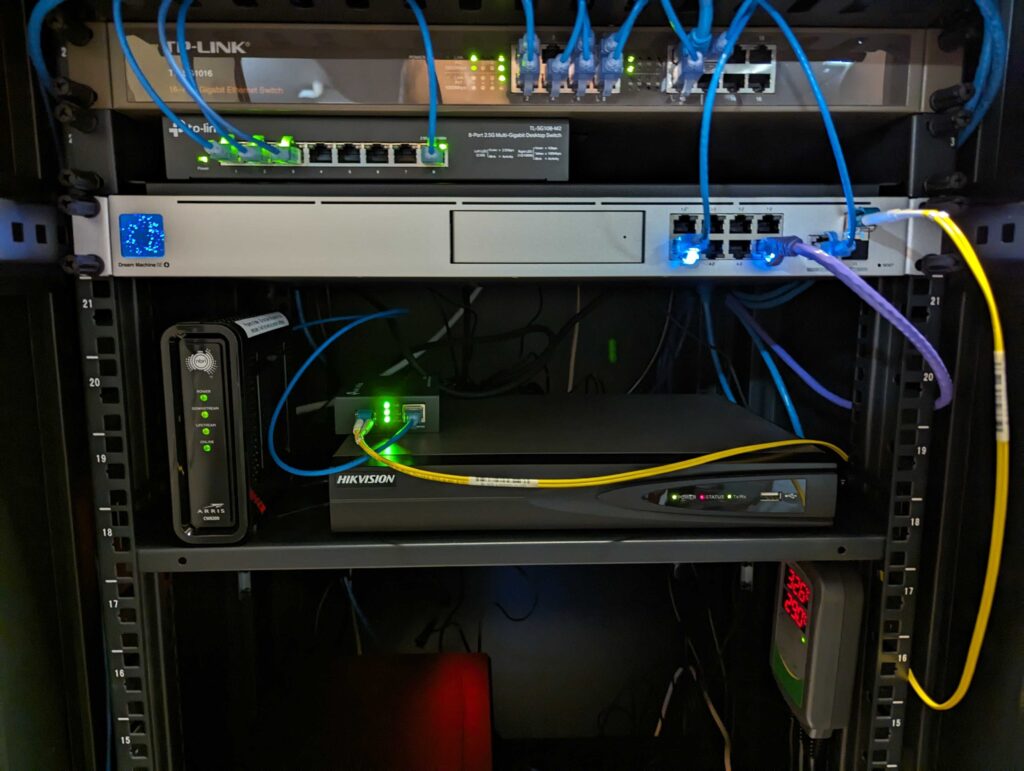At most of my jobs, there has been a certain amount of peer-pressure or peer-induced purchases. Early on it was for video game consoles and video games, and later it was other video game consoles and reading material.
At this current job, it's been homelab setups, and recently, networking gear.
The networking gear of choice for many prosumers recently is from Ubiquiti. It's definitely overkill for most use-cases, but pretty cool nonetheless.
So, with some WFH equipment allowance, I've bought a Ubiquiti Dream Machine SE (UDM-SE) router, and a WiFi 6 access point (U6-Pro).

The router
I've long been a fan of Asus routers, and their comprehensive feature set. However, one big thing that's missing from most Asus routers is creating and managing VLANs (Virtual Local Area Networks).
One great use case for something like the UDM-SE is creating different VLANs to keep certain devices separate, as well as having associated WiFi networks that correspond to the VLANs.
This helps limit security risk if an individual device goes rogue or gets compromised. A lot of routers have an isolated 'Guest' network, but this takes things further.
I have the following networks:
- A 'Default' network for most things.
- An 'IoT' network for Internet-of-Things type of devices (like my solar inverter, car charger, etc.).
- A 'Camera' network for security cameras and similar devices.
- A 'Guest' network for when guests are over.
Some extra light to stop the lightning
One thing that I'm afraid of now that I have an expensive router is the risk of lightning surges through the NBN HFC modem. The regular wall-power is pretty well protected with circuit breakers and a UPS, but approximately once every year during a storm the HFC modem gets fried through the HFC cable.
The risk is that the surge through the HFC cable can carry through the modem to the ethernet cable connecting it to the router, and then fry that too.
As the new router has SFP ports, a colleague at work suggested separating the modem with a fibre cable and an ethernet-SFP media converter. I was surprised at how cheap things were!
- TP-Link MC220L Media Converter ($37 from Umart)
- 2 x FS SFP1G-LX-31 generic transceivers ($26.40 total from FS)
- 1m fibre cable ($7.26 from FS)
So all up, it was only ~$80 (including shipping) to insulate the router from the modem.
